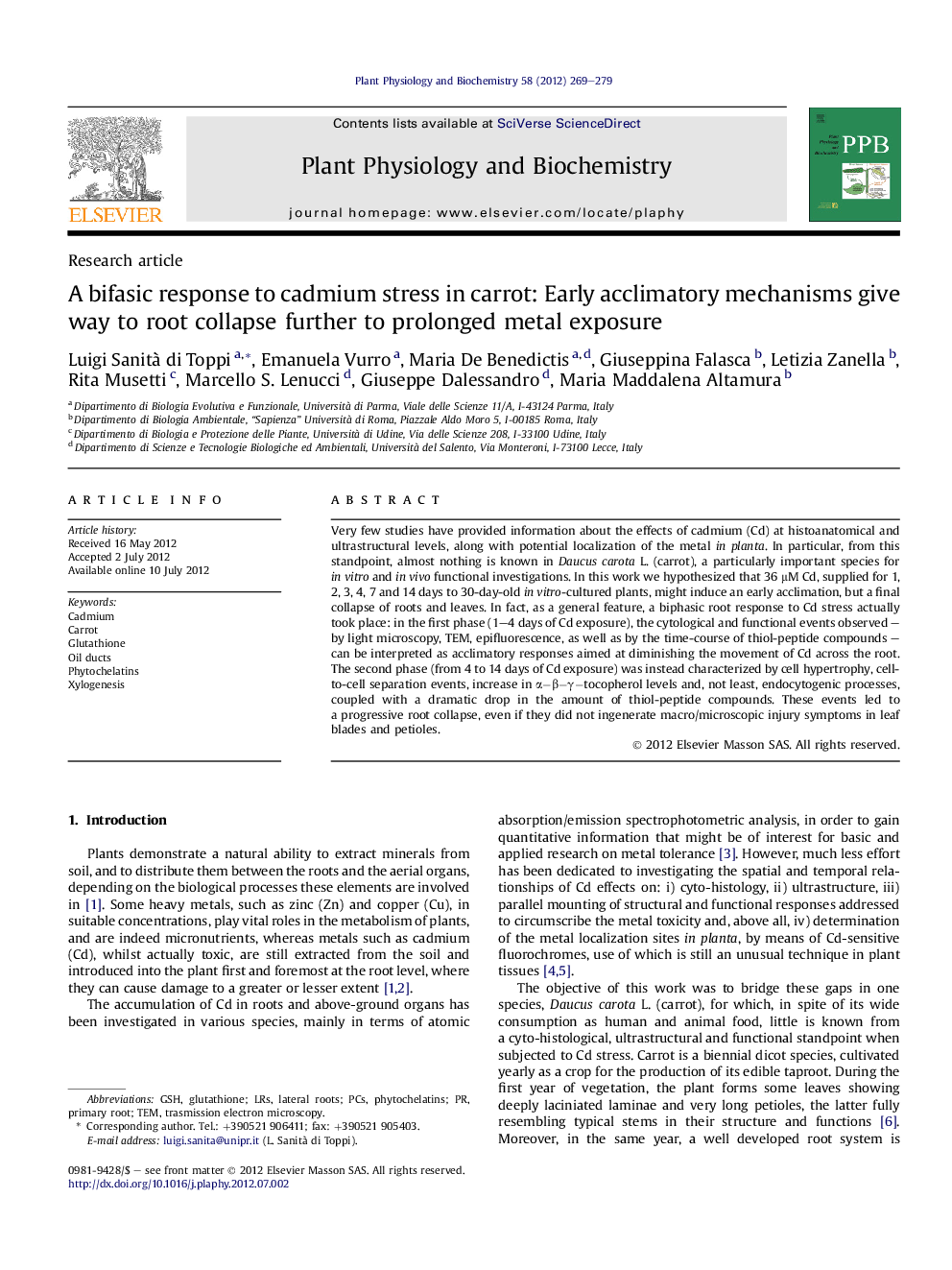| کد مقاله | کد نشریه | سال انتشار | مقاله انگلیسی | نسخه تمام متن |
|---|---|---|---|---|
| 2016182 | 1541963 | 2012 | 11 صفحه PDF | دانلود رایگان |

Very few studies have provided information about the effects of cadmium (Cd) at histoanatomical and ultrastructural levels, along with potential localization of the metal in planta. In particular, from this standpoint, almost nothing is known in Daucus carota L. (carrot), a particularly important species for in vitro and in vivo functional investigations. In this work we hypothesized that 36 μM Cd, supplied for 1, 2, 3, 4, 7 and 14 days to 30-day-old in vitro-cultured plants, might induce an early acclimation, but a final collapse of roots and leaves. In fact, as a general feature, a biphasic root response to Cd stress actually took place: in the first phase (1–4 days of Cd exposure), the cytological and functional events observed – by light microscopy, TEM, epifluorescence, as well as by the time-course of thiol-peptide compounds – can be interpreted as acclimatory responses aimed at diminishing the movement of Cd across the root. The second phase (from 4 to 14 days of Cd exposure) was instead characterized by cell hypertrophy, cell-to-cell separation events, increase in α−β−γ−tocopherol levels and, not least, endocytogenic processes, coupled with a dramatic drop in the amount of thiol-peptide compounds. These events led to a progressive root collapse, even if they did not ingenerate macro/microscopic injury symptoms in leaf blades and petioles.
► Cadmium-exposed carrot plants showed a biphasic response to the metal.
► The first phase, occurring up to 4 days, consisted in an early acclimation.
► This phase was aimed at diminishing the movement of the metal across the root.
► The second phase was instead characterized by an extended root damage.
► It led to a progressive root collapse over 14 days of metal exposure.
Journal: Plant Physiology and Biochemistry - Volume 58, September 2012, Pages 269–279